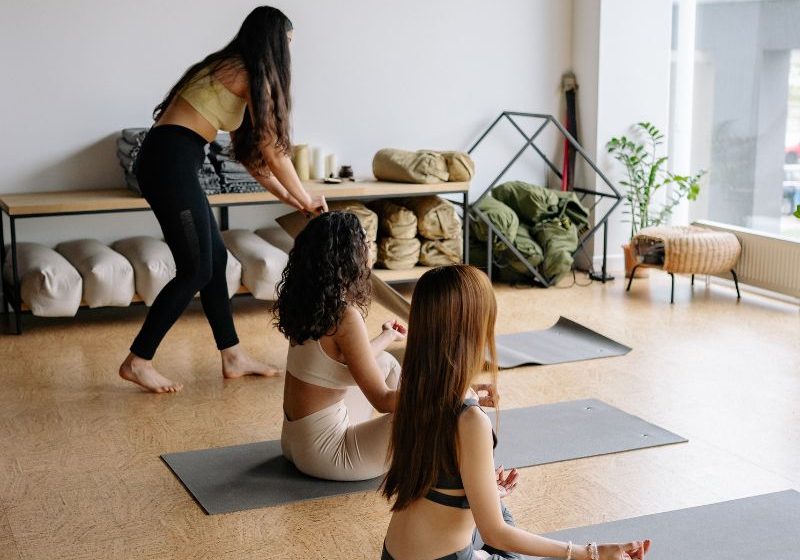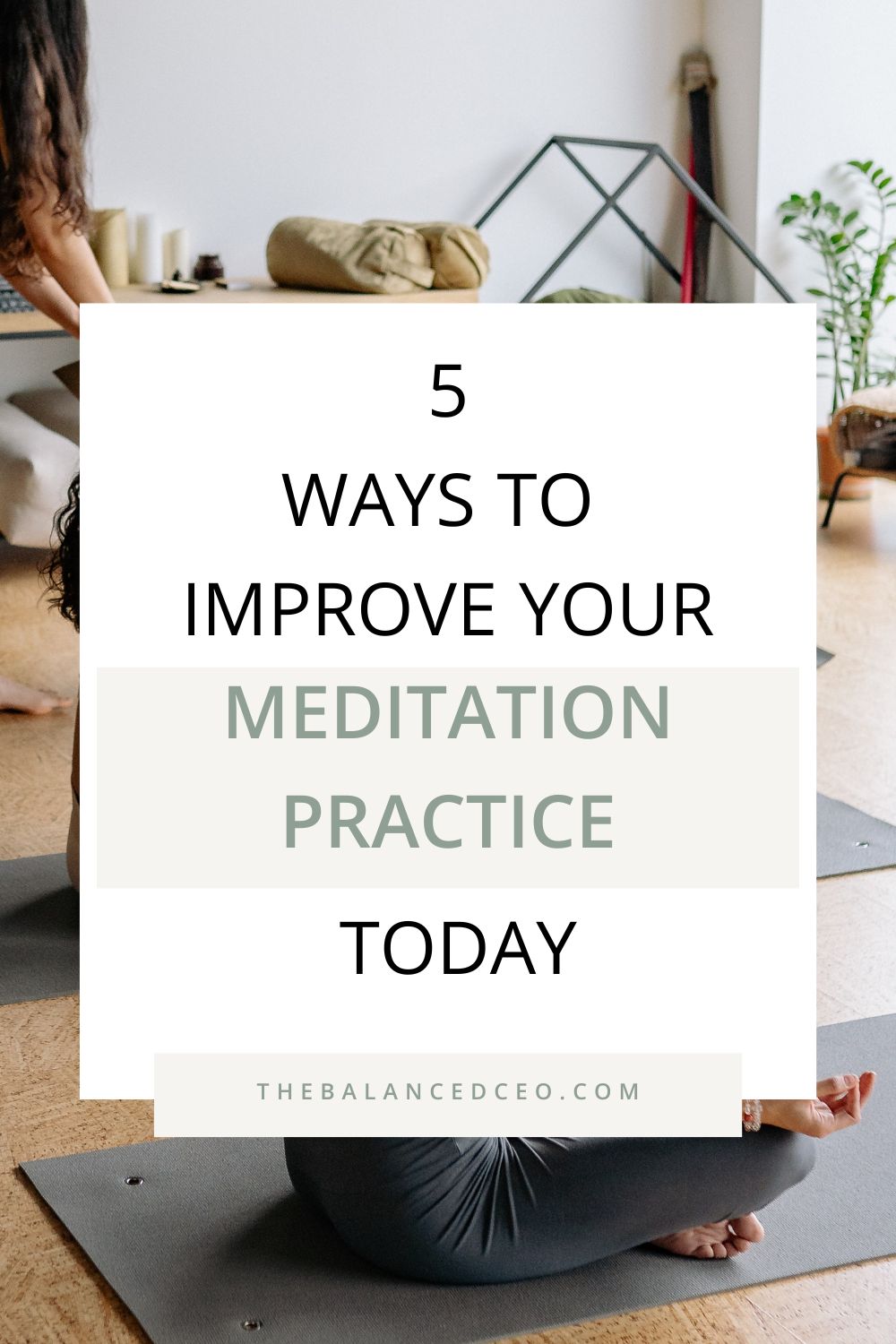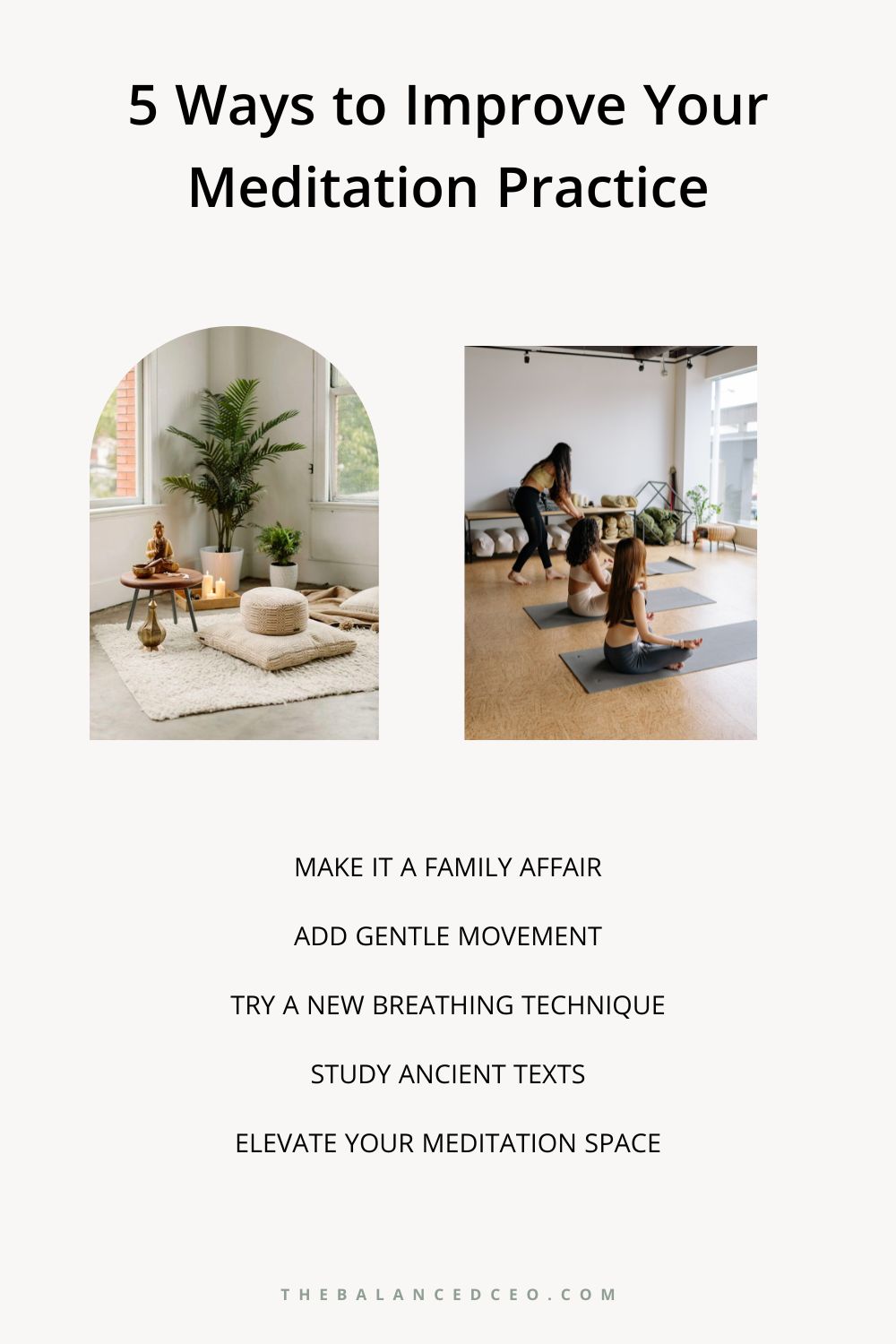This post may contain affiliate links, which means I’ll receive a commission if you purchase through my links, at no extra cost to you. Please read full disclosure for more information.

A daily meditation practice can give you a sense of calm amid the chaos of the outside world. It’s mentally healthy to step back, reflect and integrate your experiences into your overall life philosophy. It also eases stress. However, even if you have a routine, you might wonder how you could improve it.
What should you do? Here are five ways to improve your meditation practice today.
1. Make It a Family Affair
Many people mistakenly believe that only adults can meditate. However, if your child is old enough to sit quietly at school or religious services, they’re mature enough for you to introduce them to the practice. Doing so could head off behavioral issues down the road, as many schools that have implemented mindfulness in place of detention see fewer incidents of acting out without harsh punishments.
Even 2 or 3-year-old children can learn to appreciate the value of solitary play, creating an opportunity for parents. Instead of using “go to your room” as a punishment, introduce the idea of quiet play time as a rewarding part of your daily routine. For example, kids growing out of the need for a nap might still go to their rooms to color or flip through picture books for 30 minutes each afternoon. These mindful activities are also meditative.
As your children mature, you can introduce them to more formal meditation practices. They may express an interest if they see you practicing — use age-appropriate language to explain why you meditate and how it helps you.
2. Add Gentle Movement
People of all ages can practice yoga, from tiny tots to centenarians. Add gentle movement to your meditation routine to improve your practice and share it with your kiddos.
For example, you can have your kiddos round their backs like scared Halloween kitties or stick out their tongues and roar like a lion. Giggling isn’t only okay, it’s encouraged — after all, laughter produces the same feel-good endorphins you get from a more formal meditation practice.
You don’t need children to improve your meditation practice with gentle movement. Some yoga styles, such as Yin and restorative, follow a slow pace that has you holding poses for several minutes. Try performing a body scan as you mindfully explore each posture, breathing into tight areas to consciously relax them.
Related Reads:
• 8 Tips for Starting a Meditation Practice
• How to Meditate Effectively When You Don’t Think It’s Working
3. Try a New Breathing Technique
Slow, deep breathing tones your vagus nerve and helps invoke your body’s parasympathetic response. That’s the side of your autonomic nervous system that says, “It’s okay. You’re safe, and it’s time to relax.”
You can try dozens of different breathing exercises to induce a quiet, meditative state. Try some of the following the next time you sit on your mat or zafu:
- Continual breathing: In this technique, you strive to eliminate any pause between your inhales and exhales, making them long, slow and even as one flows into the next.
- 2-to-1 breathing: Elongate your exhales roughly twice as long as your inhales.
- Boxed breathing: Inhale for a four-count, then hold your breath for four. Exhale for the same length, pausing again for a four-count at the bottom before inhaling again.
- Alternate-nostril breathing: Place your thumb on your right nostril and exhale through your left. Then, close your left nostril and inhale through your right.
4. Study Ancient Texts
Meditation has existed since humanity’s earliest recorded history, and many ancient texts speak of the practice. Why not see what the wisdom of the ages has to say?
One technique is to begin your meditation with a reading. If you follow a particular religious faith, you might select a favorite verse from your holy book. Otherwise, consider exploring volumes like the Tao Te Ching. For example, if you tend to push too hard, risking burnout daily, you could take comfort in the idea of wu wei — allowing our natural inclinations to bring about the results you want instead of forcing matters.
5. Elevate Your Meditation Space
Although you can meditate anytime and anywhere, it helps to have a sacred space devoted to the purpose. However, you won’t love spending time there unless it speaks to your soul.
What are some ways you can personalize your meditation space? Here are some fun ideas to implement:
- Consider sound: If you like silence, soundproofing a room is easier than you may think. You can also use meditative music — keep your favorite earbuds handy when you want to shut out the world.
- Try aromatherapy: Relaxing scents like lavender and rose put you in a relaxed frame of mind.
- Include nature: Nature helps to ease stress, so add a houseplant or two — or make your space a gazebo in your garden.
- Get comfortable: Many people like to sit on a special round pillow or zafu to meditate. However, there’s no need to take a lotus pose. If you enjoy reclining in savasana, look for an extra-squishy mat to pad you and a bolster to place beneath your knees.
How to Improve Your Meditation Practice Today
Meditation can bring necessary respite in today’s chaotic world. What can you do to enhance your practice? Consider these five ways to improve your meditation today. You’re more likely to stick with your healthy habit if you make it something you love.

Ava Roman
Contributor
Ava Roman is a mom, a yogi, and currently a Managing Editor of a women’s lifestyle website. She believes work/life balance is achievable once you learn to set and stick to firm boundaries. You can find more from Ava on her website, Revivalist.






Leave a Reply